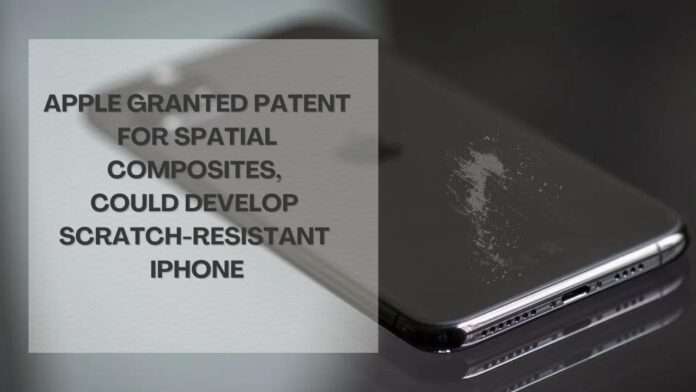Table of contents
Introduction
- Apple has recently been granted a patent for a new technology called “Spatial Composites.”
- This technology has the potential to make iPhones more scratch resistant.
- The patent was filed in 2019 and granted on June 13, 2023.
- The process for producing a solid, light-weight, and scratch-resistant material is covered by the patent.
- This material can be used to make the back panel of an iPhone, reducing the need for protective cases.
Understanding Spatial Composites
- Spatial Composites are made by combining different materials in a specific way.
- The arrangement of materials creates a strong, lightweight, and scratch-resistant material.
- The patent specifies two techniques: coating a metal substrate with ceramic or plastic, or coating a ceramic substrate with metal or plastic.
- Varying the thickness and types of materials allows for different properties and characteristics of the Spatial Composites.
Potential Benefits of Spatial Composites in iPhones
- Scratch Resistance
- Spatial Composites would be more resistant to scratches compared to the current glass back panel.
- Reduced need for protective cases, resulting in a lighter and more stylish iPhone.
- Durability
- Spatial Composites offer increased durability, making the iPhone more resistant to accidental drops and damage.
- Unique Design
- Spatial Composites can be used to create different patterns or textures, providing a more personalized look for the iPhone.
Potential Applications of Spatial Composites
- iPhone Back Panel
- Spatial Composites can be used to replace the current glass back panel, offering improved scratch resistance and durability.
- iPhone Screen
- The technology could also be applied to the screen of an iPhone, enhancing its scratch resistance and durability.
- Housing of Other Electronic Devices
- Spatial Composites can be utilized in the housing of various electronic devices, providing increased durability and design options.
- Building Materials
- The material’s properties make it suitable for use in building materials, offering durability, scratch resistance, and design flexibility.
- Automotive Parts
- Spatial Composites can be utilized in automotive parts, enhancing their durability, scratch resistance, and lightweight characteristics.
Additional Advantages of Spatial Composites
- Increased Heat Resistance
- Reduced Weight
- Improved Conductivity
- Enhanced Flexibility
Future Developments
- While Apple has not announced any immediate plans to use Spatial Composites in future iPhones, the patent suggests their interest in developing this technology.
- If Apple decides to incorporate Spatial Composites into iPhones, it could bring significant improvements to the devices.
- Ongoing monitoring of developments in this area will provide updates on potential utilization of Spatial Composites.
Conclusion
- Apple’s recent patent grant for Spatial Composites indicates their focus on developing a more durable and scratch-resistant iPhone.
- The technology offers potential benefits such as scratch resistance, durability, and unique design options.
- Spatial Composites could find applications beyond iPhones, such as in building materials and automotive parts.
- The additional advantages of Spatial Composites, including increased heat resistance, reduced weight, improved conductivity, and enhanced flexibility, further enhance their value.
- Continued monitoring of Apple’s developments in this area will reveal whether Spatial Composites become a reality in future iPhone models.

